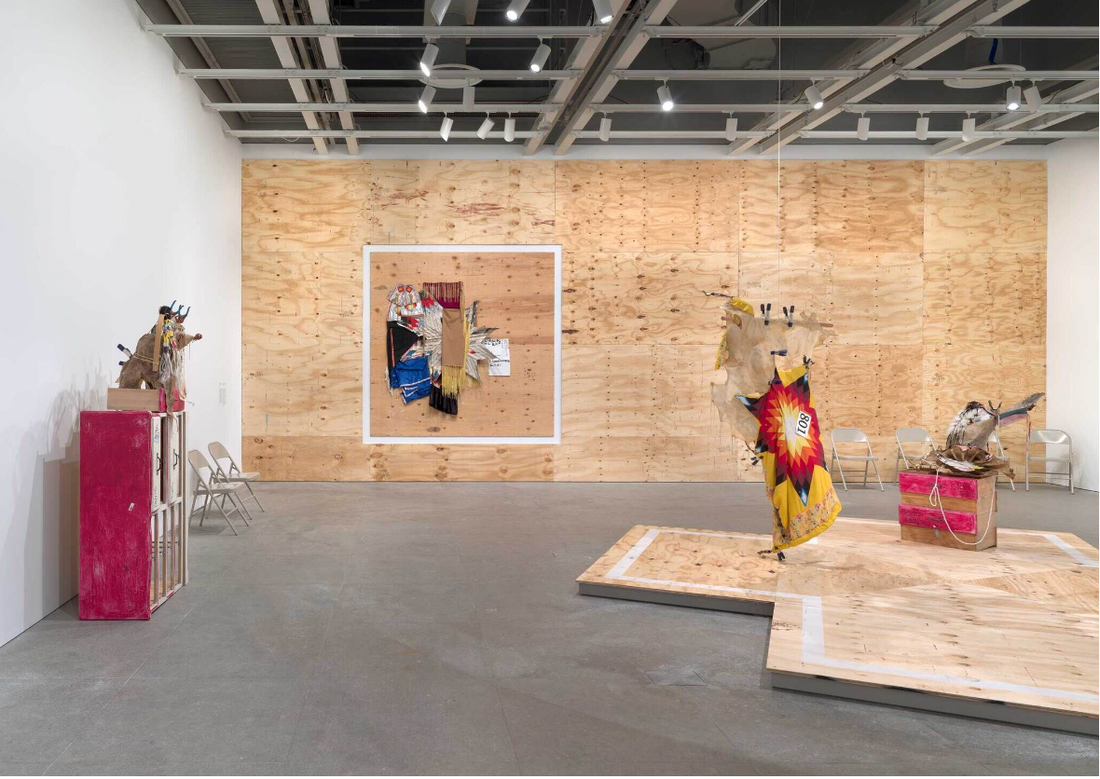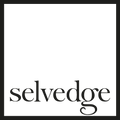
Natalie Ball: Bilwi Naats Ga’niipci
Natalie Ball: Bilwi Naats Ga’niipci, showing at the Whitney Museum of American Art gathers a group of new sculptural assemblages by Natalie Ball (b. 1980). Its title, bilwi naats Ga’niipci, translates to “we smell like the outside”—an adaptation of an expression Ball associates with her childhood and family in both Black and Indigenous spaces. The word “naats,” or “we,” reflects her intersecting identities as a Black, Modoc, and Klamath artist working from her ancestral homelands in Southern Oregon and Northern California.

Image: Installation view of Baby Board by Natalie Ball, 2023. Image above: Image: Installation view of Natalie Ball: bilwi naats Ga’niipci (Whitney Museum of American Art, New York, November 17, 2023 – February 19, 2024). From left to right: Sponge Bobby & The Fork-ed Horn Dancers, 2023; Dance Me Outside, 2009/2023; Baby Board, 2023; ...with a hat to m.
Ball begins by gathering a range of materials, often including hides, quilts, newspaper, and plywood. She then deconstructs, shapes, and stitches these objects together into layered forms that evoke a bodily presence. Her working process takes place within an expansive “studio” that encompasses her house, garage, yard, and the nearby ya-ah-gah goo’geh (Williamson River) and is inseparable from her relationships with the people and languages of her communities............................

Image: Installation view of Baby Board by Natalie Ball, 2023. Image above: Image: Installation view of Natalie Ball: bilwi naats Ga’niipci (Whitney Museum of American Art, New York, November 17, 2023 – February 19, 2024). From left to right: Sponge Bobby & The Fork-ed Horn Dancers, 2023; Dance Me Outside, 2009/2023; Baby Board, 2023; ...with a hat to m.
Ball begins by gathering a range of materials, often including hides, quilts, newspaper, and plywood. She then deconstructs, shapes, and stitches these objects together into layered forms that evoke a bodily presence. Her working process takes place within an expansive “studio” that encompasses her house, garage, yard, and the nearby ya-ah-gah goo’geh (Williamson River) and is inseparable from her relationships with the people and languages of her communities............................
Want to read more of this article?
We are proud to be a subscriber-funded publication with members in 185 countries. We know our readership is passionate about textiles, so we invite you to help us preserve and promote the stories, memories, and histories that fabric holds. Your support allows us to publish our magazine, and also ‘what's on’ information, and subscription interviews, reviews, and long-read articles in our online blog.
ALREADY A SUBSCRIBER? CLICK HERE TO ACCESS CONTENT

